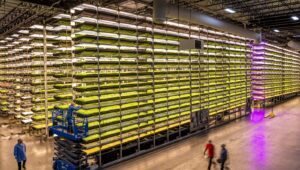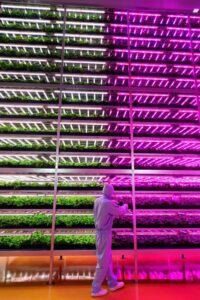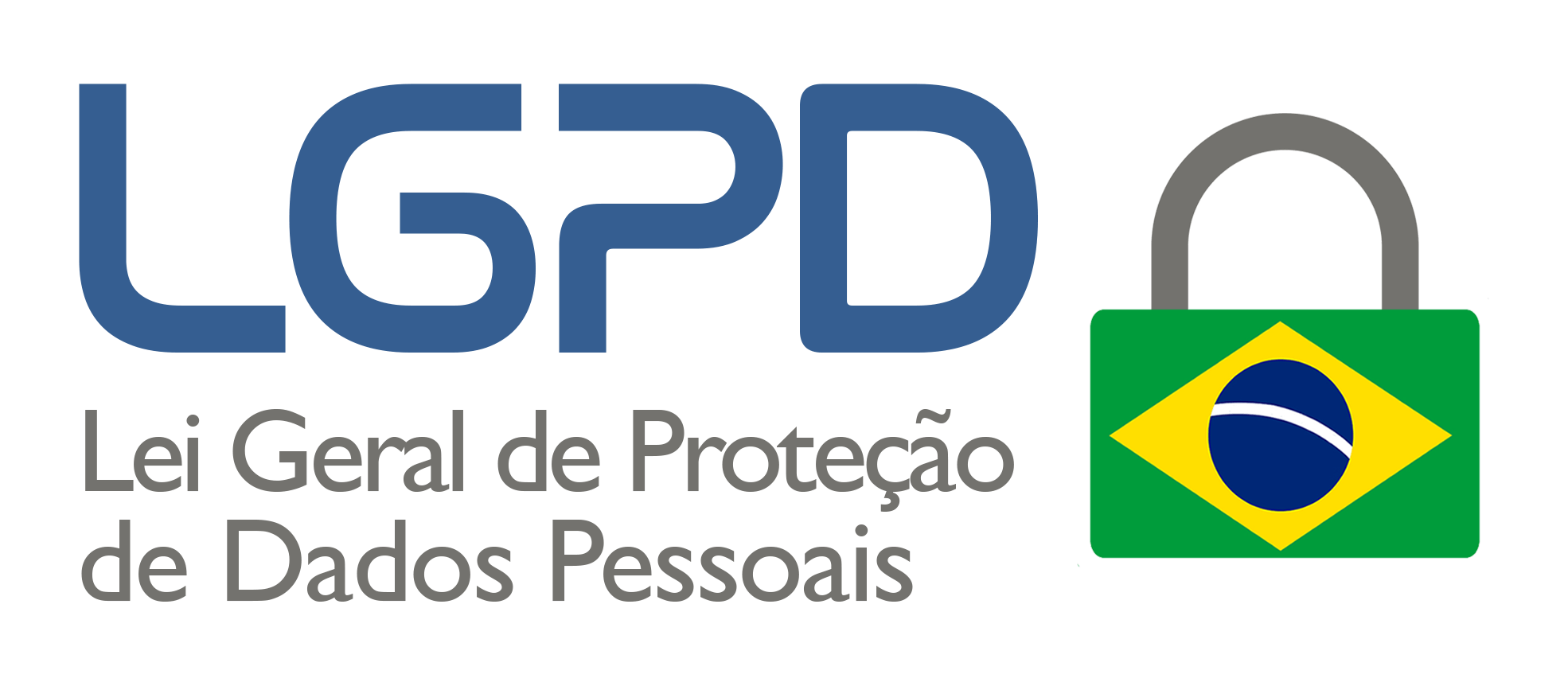Vertical Farms and Vertical Farming
The practice of growing agriculture crops in vertically-stacked layers, commonly known as vertical farming, often incorporates controlled environment agriculture (CEA) and soilless farming techniques; such as hydroponics, aquaponics, and aeroponics.
Hydroponics
Hydroponics refers to the technique of growing plants without soil. Inert mediums, such as gravel, sand, and rockwool, are used as soil substitutes to provide support for the roots. Because hydroponics have proven to increase yield per area and reduce water usage, it is the predominant growing system used in vertical farming. A study published in the International Journal of Environmental Research and Public Health found that, compared to conventional farming, hydroponic farming could increase the yield per area of lettuce by around 11 times while requiring 13 times less water.
Aquaponics
The term aquaponics is a portmanteau formed by combining aquaculture – which refers to fish farming, and hydroponics – the technique of growing plants without soil. By integrating the production of terrestrial plants with the production of aquatic organisms, aquaponics takes hydroponics one step further. In a closed-loop system that mimics nature itself, plants consume carbon dioxide produced by the fish and the water in the fish tanks generates heat that helps the farm maintain temperature at night to save energy. Given that most commercial vertical farming systems focus on producing fast-growing vegetable crops, aquaponics is currently not as widely used as conventional hydroponic systems.
Aeroponics
Unlike conventional hydroponics and aquaponics, aeroponics does not require any liquid or solid medium to grow plants. Instead, a liquid solution with nutrients is misted in air chambers where the plants are suspended. When compared to the most efficient conventional hydroponic systems, this process uses up to 90% less water. The absence of a growing medium allows aeroponic systems to adopt a vertical design. This uses gravity to automatically drain away excess liquid, which further saves energy.

LED provides spectrum selective illumination for different kinds of plants to optimize its development, by developing different light recipes for optimum indoor farming:

If your company is interested in participating in business opportunity such as these, we would be more than glad to act as your bridge into Brazil.
Always count on the widely respected experience and networking of MEREGE Consulting Partners to reach out to the right people at the right time.
Please, check out the KEY ON-GOING BUSINESS CASES :
BUSINESS CASE FAB / TELEBRAS “SGDC-1 / SGDC-2 plus TT&C COPE”
BUSINESS CASE FAB / AEB “ALCANTARA launching base”
BUSINESS CASE INPE REMOTE SENSE SATELLITE “CBERS”
BUSINESS CASE INPE REMOTE SENSING SATELLITE “AMAZONIA-1”
BUSINESS CASE FAB – CARPONIS-1 / HR Remote Sensing
BUSINESS CASE SMART AGRICULTURE – NB-IoT
BUSINESS CASE MB “UNMANNED AIRCRAFT”
BUSINESS CASE MB “ANTI-SHIP MISSILES”




